Kinds of Trademark Status in India
Introduction
Getting a trademark (TM) registration is a lengthy process. It includes multiple steps from the filing of a trademark application to its successful registration. After submitting your application, at various stages of the Trademark registration process, you need to reply via your trademark attorney, etc. That is why knowing the different statuses is very important. If you know the meaning of types of each TM status then it makes it easy for you to know what you need to do during that stage. For example, if your application is at the objection stage, then what do you need to file in response? In this article, we will let you know about all the important trademark statuses that you should be aware of.
What are the Different Trademark Statuses?
After figuring out what can be Trademarked, and filing your Trademark application, it’s important to keep track of your application. Your Trademark application will have to go through various statuses before it gets registered. Status change in a trademark application is visible after filing the trademark application. Below is the list of different kinds of trademark statuses.
1. Send to Vienna Codification
The TM status applies to brands that contain a logo, label or artwork. This trademark status applies to brand names that do not contain words/ combinations of letters in their logo but a creative design. Such trademarks are generally classified, into divisions and sections. The Applicant is not required to perform any action at this stage.
2. Formalities Chk (check) Pass
This trademark status appears when the application fulfils the requirements of trademark laws of India. This merely means that the information filled in the trademark form as well as the documents submitted with the trademark application is error-free.
Formalities/ requirements related to a trademark application include:
- Submitting a complete trademark application. Don’t miss submitting any application-related documents as it may cause trouble during the application process in the later stages.
- Error-free filling of forms. Suppose, there is dissimilarity in the application form and the documents submitted at the Trademark Registry. In that case, the Trademark Registry may fail the application for non-submission of proper documents and the applicant will have to submit the necessary documents again.
- Attestation of necessary documents along with every government form related to the trademark application.
- Proper stamping and notary in the trademark documents wherever necessary.
The application moves forward in the process if every document is in line with the necessary guidelines and rules.
3. Formalities Chk (check) fail
According to this trademark status, the trademark application fails to meet the necessary rules and regulations. This means there are errors in the trademark application. One should keep in mind the points listed above while filing a trademark application.
There are very few reasons for this TM status in any application. Below is a brief list of possible reasons for a formalities check fail –
- If some document is not filed at the Trademark Registry at the time of submitting an application.
- If there are errors in the filing of any of the documents or in the forms.
- It is likely that the document does not carry a stamp and notary on important documents.
It’s important to note, however, that it is possible to get Formalities Chk Pass from Formality Chk Fail. You just need to make the apt corrections.
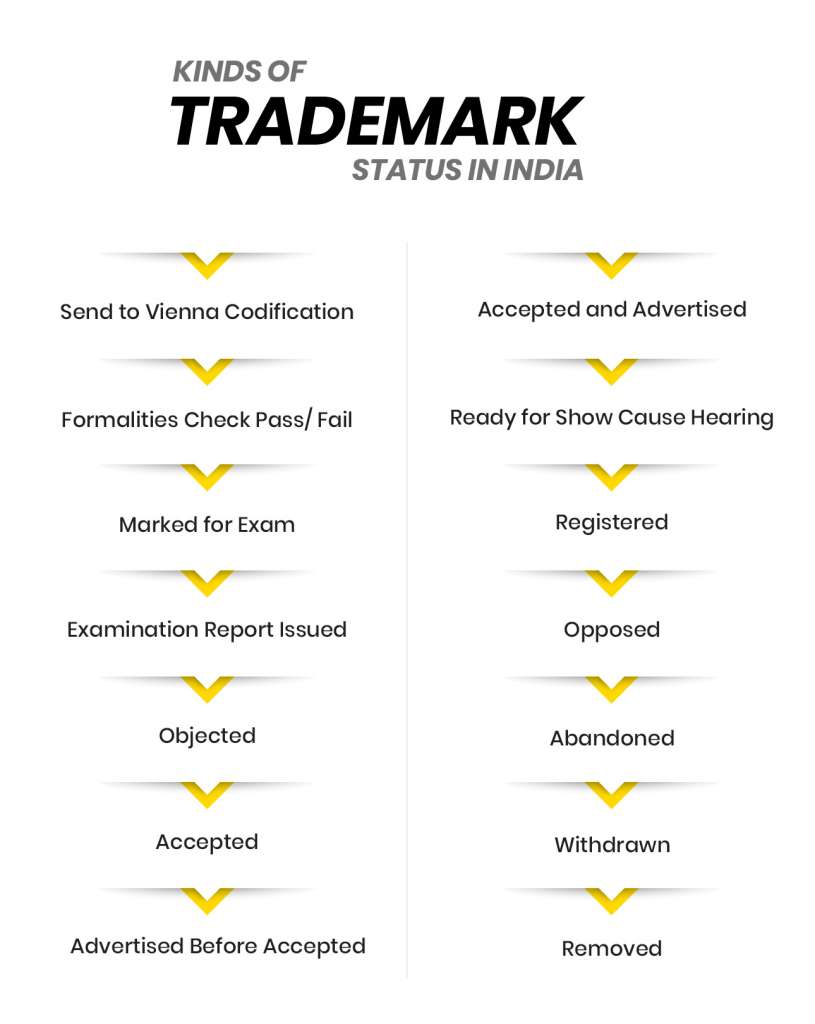
4. Marked for Exam
This means that your application is in line with the rules and guidelines of the trademark application therefore it is moving ahead for trademark examination. The Trademark Registry checks the trademark application for any discrepancies. The formalities check ensures that every piece of information filed at the time of filing the application is free of errors whereas, the trademark examination at this stage ensures that the trademark does not contain any technical errors such as –
- Whether the trademark is distinctive in nature?
- Whether the trademark is directly related to the goods and/or services of trade?
- Whether the trademark is obscene or immoral?
- Whether the trademark applied for goods and/or services are dissimilar to the business activities of the applicant?
5. Examination Report Issued
The Trademark Registry issues a trademark examination report. In the examination report, there are objections related to the structure and the form of the trademark. The applicant should submit reasonable justification for objections raised in the examination report.
6. Objected
The trademark status means that there is a Trademark Objection against your trademark application from the side of Trademark Registry. The applicant shall address the same within the given time frame. The timeline to respond to the trademark application is one month from the date of issue of the examination report. However, the applicant may request an extension of time for filing a response to the examination report. The trademark application will move forward only when the Trademark Registry is satisfied that the trademark applied for is fit to proceed toward trademark registration.
7. Accepted
This status means there is no office objection to the trademark application. This particular trademark status remains there for a brief time. After this status, the trademark application will go for publication in the weekly trademarks journal. At this stage, the applicant is not required to take action but should keep a watch on the progress of the trademark application.
Note: The trademark application status shall be accepted or objected after completion of the examination.
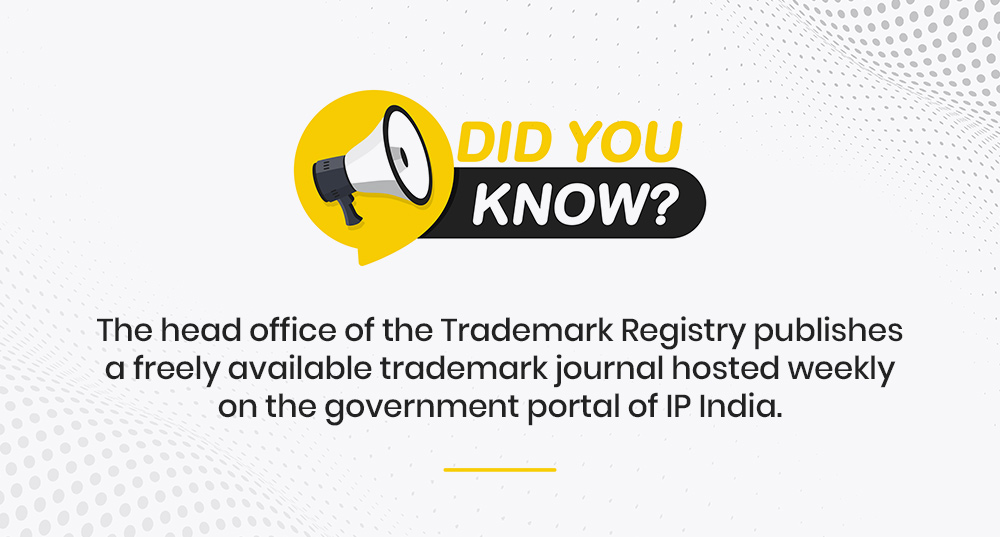
8. Adv. (advertised) Before Accepted
At this stage, the trademark application is in the records of the trademark journal. Any third party can pursue opposition against the trademark application. A trademark application remains open to opposition for a period of four months. This is a mandatory four-month freezing period where any third party can oppose the registration of such trademark application. If no third-party opposition is received against the trademark application it is accepted and advertised.
9. Accepted and Advertised
This trademark status appears at the pre-final stage of trademark registration. At this stage, the applicant does not need to pursue any action but wait for a change of status of the trademark application to Registered.
10. Ready for Show Cause Hearing
The trademark status merely means that response to the examination report is not satisfactory therefore the Trademark Registry is transferring the trademark application for a hearing. The applicant presents their case during a hearing as to why the trademark application should move forward in the registration process. Ideally, the applicant attends the trademark hearing on the date fixed by the appropriate Trademark Registry. If the applicant does not represent themselves in the show cause hearing then the Trademark Registry will abandon the application and it will not move forward in the registration process.
The Trademark Registry allots a date of hearing on which the applicant represents themselves to present their case. In case, the applicant does not attend the show cause hearing then the Trademark Registry will allot a new date for trademark hearing. Further, if this happens more than three times with insufficient reasons then the trademark application may move for cancellation.
It is important to note that if the applicant is not present during the show cause hearing. Then they can request a new date of hearing, simply by submitting a letter of request. Nowadays, a precise and simple mail to the Registrar of Trademarks before the date of hearing is sufficient for a letter of request. However, the allotment of a new date of hearing is at the discretion of the Registrar of Trademarks.
11. Registered
The Trademark Registry registers the trademark when the application is free from all procedural as well as legal requirements. After registration, you get the Trademark registration certificate and can finally start enjoying the benefits of Trademark Registration.
12. Opposed
Once the trademark application comes on the record in the trademark journal, the trademark application remains open for trademark opposition from any third party. During this time, if according to any third party, the trademark application is not apt to be in the records of the trademark journal, then such a party can oppose the trademark application.
13. Abandoned
This trademark application status means the Trademark Registry is no longer prosecuting the trademark application. It means that the applicant has stopped pursuing the trademark application. Either the applicant has delayed in filing a response to the examination report at the time of the examination process or the applicant has missed complying with any such similar requirements of the Trademark Registry.
14. Withdrawn
This is for the voluntary withdrawal of the trademark application. This will be the status of the trademark if the applicant raises a request for withdrawal of the trademark application. After the withdrawal of a trademark application, one cannot restore it. Lastly, the applicant can raise a request for trademark withdrawal at any point in time before the trademark is registered.
15. Removed
A trademark application is removed from the register of trademarks when the trademark applicant does not comply with any of the requirements of the Trademark Registry. For example, if the trademark applicant misses renewing the trademark application, the trademark application will be removed.
Above is the list of trademark statuses that may appear on your trademark application at various points of time during the lifecycle of the trademark registration process.
It is not enough to know about different kinds of trademark registration status if you are unaware of how to check trademark status in India. Therefore, we are providing you with a bonus guide of a step-by-step process of checking trademark status on the official trademark portal of India.
How To Check Trademark Status?
It is important to stay updated and perform a status check on the official portal of the Intellectual Property website. This is the process for Trademark status check:
Step 1
To conduct a trademark status check, one is required to access the official portal of Intellectual Property India.
Step 2
Once, the official website of the Trademark Registry is open, the applicant is required to opt for the ‘Trademark Application/ Registered Mark’.
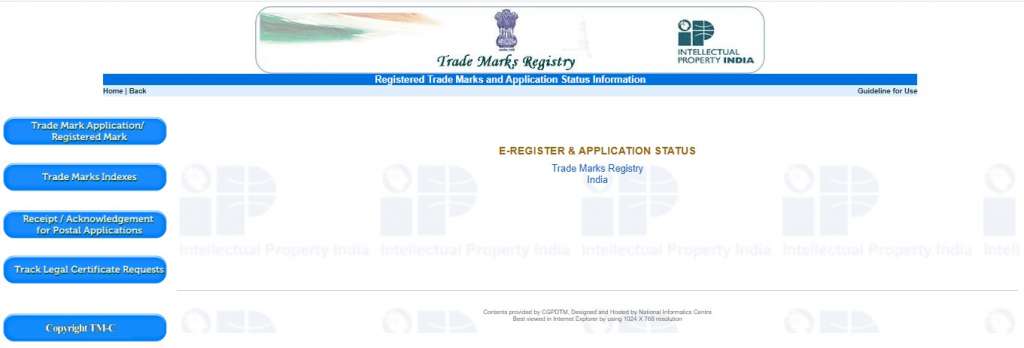
Step 3
After selecting the correct option from the taskbar, the applicant can select the option of National/ IRDI Number appearing on the screen.
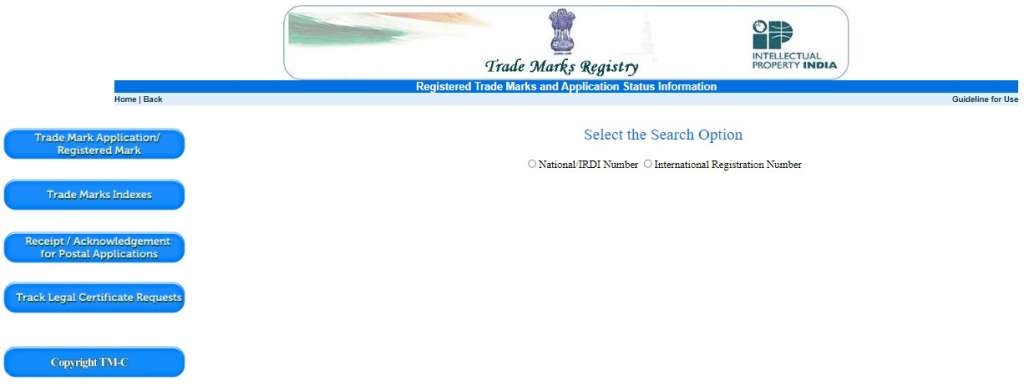
Step 4
At this stage, you are required to input the application number in the right fields and input the code/ or the captcha and click on ‘View’ to see the application status and other necessary details. At the time of filing the trademark application, you have received the application number.
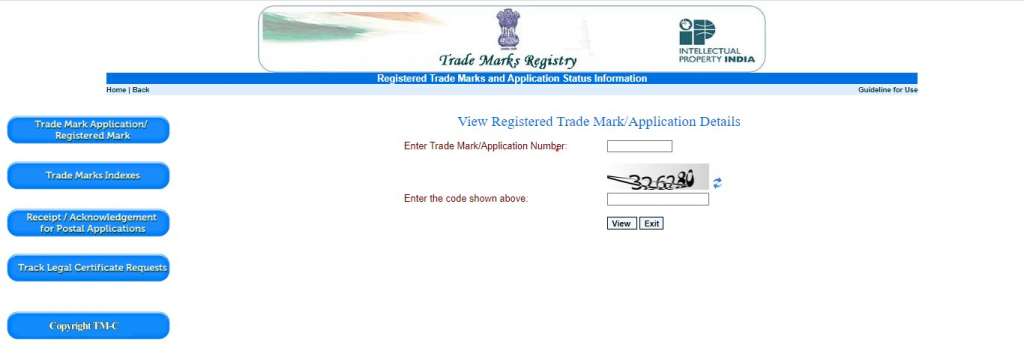
Conclusion
It is important to keep track of the trademark registration status of your trademark application. If you follow the steps listed above, it will become easier for you to track your trademark status. An important piece of advice would be that managing a trademark application is a complex process. Therefore, it is advisable to seek expert advice while filing a trademark application. LegalWiz.in has a reliable team of professionals who can guide you through the process of trademark registration without much hassle.
Frequently Asked Questions
How long does Trademark Registration Take?
Trademark registration can take from a few weeks to even 6 months! however, with the help of professionals like LegalWiz.in you can get your registration done quickly without any hassle.
Is Trademark registration expensive?
Trademark registration is not very expensive, however without professional help the process can get pulled very long and lead to heavy expenses!
Why is checking Trademark Status important?
Checking your TM status helps you ensure your application keeps moving forward. At various stages, such as when your TM status is “objection” you need to file a response, and if you don’t do it within adequate time, your application directly gets rejected. Hence, knowing what status your application is at is very important.

Rohan Sharma
Rohan Sharma is a lawyer with a flair for writing. Rohan has a special interest in the domain of Intellectual Property Rights and possesses an extensive experience in the fields of trademarks, copyrights and industrial designs. Aiming to understand the intricacies of law as a concept and its symbiosis with advancing technology and changing societies, the author seeks to examine the nuances of law.
